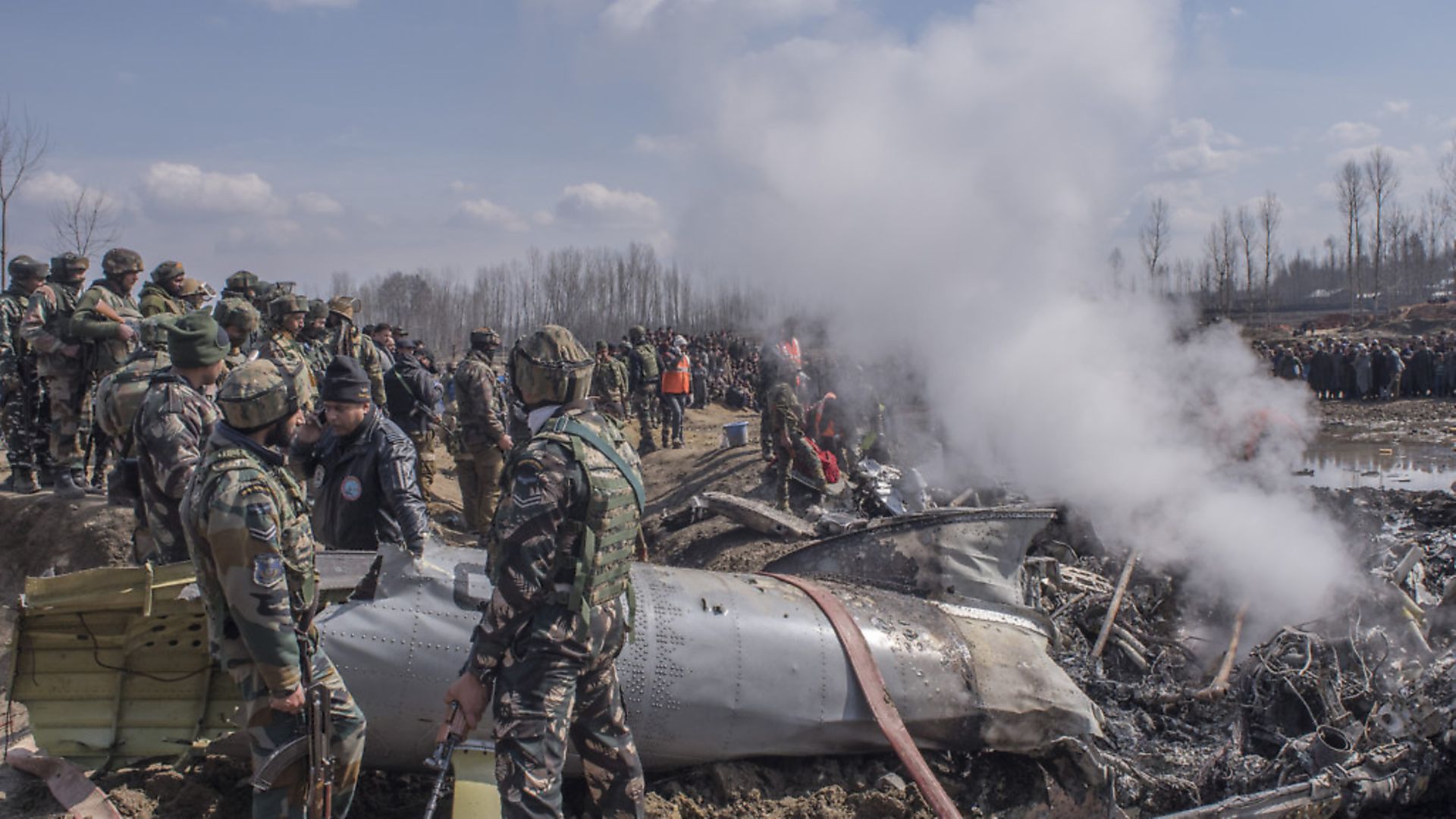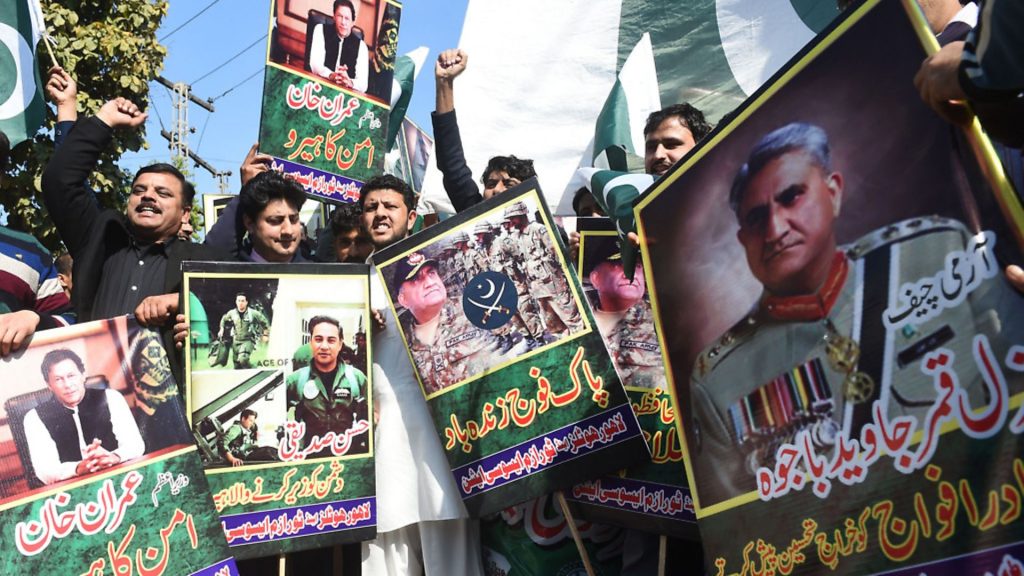
Slight easing of tensions between nuclear neighbours India and Pakistan cannot disguise the worsening chances of fixing this global fault-line, says PAUL KNOTT.

Any understandable sense of global relief felt that India and Pakistan have stepped back from the precipice of all-out war in recent days ought to be tempered by three considerations. Firstly, the antagonistic neighbours remain nuclear-armed: Pakistan reportedly has 140 to 150 warheads, India has between 130 and 140. Secondly, the acute tensions between the two will inevitably escalate again at some point soon, and the internal political dynamics of both are making it increasingly difficult to see how future flare-ups can be contained. And, thirdly, the international community seems singularly ill-equipped to playing the necessary restraining role.
The proximate cause of the latest fighting was a suicide bombing in the disputed Indian-controlled territory of Jammu and Kashmir by a Pakistan-based terrorist group, Jaish-e-Mohammed (JeM), last month. The attack killed 40 members of India’s paramilitary police force. India retaliated two weeks later by sending its air force into Pakistan for the first time since 1971 to bomb, it claims, a JeM training base near the town of Balakot. At least one Indian fighter jet was shot down in skirmishing with its Pakistani adversaries and its pilot taken prisoner. He has since been released as ‘peace gesture’ by Pakistan. But lethal exchanges of fire are continuing across the current de facto border, known as the Line of Control.
The deeper roots of India and Pakistan’s fraught relationship go back to Britain’s poorly-planned and rushed exit from its colonial occupation of India in 1947. Almost on the eve of its departure, Britain agreed to partition the territory of the Raj into two independent states: Pakistan, with a Muslim majority, and India, with a Hindu majority. This prompted a chaotic mass migration of populations between the two nascent nations and triggered an inter-communal conflict which killed hundreds of thousands of people.
The status of the Kashmir region straddling the frontier of the two new countries was left unresolved. It was ruled by a maharaja, who initially sought to make it an independent state but quickly signed it over to India in exchange for military aid to put down an uprising by some of his subjects. Further fighting followed which resulted in roughly two-thirds of the state becoming part of India and one-third joining Pakistan. A UN recommendation of a referendum for the Kashmiris to decide their own fate was never implemented.
The legacy of this upheaval was a Muslim-majority region left uneasily inside Hindu-dominated India. The situation was aggravated by a 1987 provincial legislative assembly election which Kashmiri Muslims believe was rigged by the Indian government. Mass protests ensued, spawning an armed pro-independence uprising that has ebbed and flowed ever since. Harsh repression of this insurgency by the Indian security forces maintains some degree of control, at the cost of many civilian lives and hardening the resentments of the Kashmiri population. Kashmir has been a major factor in the short wars fought between India and Pakistan in 1947, 1965, 1971 and 1999. In between these outbreaks, the cauldron is kept boiling by terrorist attacks in India, launched by extremist groups from Pakistan. Pakistan denies supporting terrorism but admits to providing ‘political and moral’ support to Kashmiri ‘freedom fighters’.
Most analysts see this as sophistry and believe terrorist groups, such as JeM, are not only tolerated by Pakistan but often operate with the connivance of its military and notorious ISI intelligence agency.
Pakistan sees these groups as a way of taking the fight to its much larger and more militarily powerful neighbour, India, which it views as an occupying power in Kashmir and a threat to its own stability. (The two countries may have comparable nuclear arsenals but India has much stronger conventional armed forces.) Some observers also point out that the Pakistani security forces need to build up India as an enemy to justify their massive budgets and powerful position in the country.
Whatever the motivation for Pakistan, the terrorist tactics used are indefensible. Prior to the recent murder of the 40 paramilitary police officers, JeM and a similar Pakistani-based extremist group, Lashkar-e-Taiba (LeT), killed nine people in 2001 during an armed assault on India’s parliament.
The 2008 LeT attack on India’s commercial capital, Mumbai, saw 160 people massacred in hotels, at a railway station, a café and a Jewish community centre. By most international standards, India’s responses to these attacks have been restrained. But no state can be expected to endure this kind of conduct by a neighbour indefinitely, and long-term peace must involve Pakistan ending its appalling behaviour.
Prime minister Imran Khan’s public statements hint that he recognises the need for Pakistan to stop supporting terrorists. But as his country’s coup-ridden history shows, Pakistani prime ministers serve at the behest of the armed forces, not the other way around. It will take quite some time, if ever, for him to persuade the military and security services to change tack.
The greatest immediate concern now is the range of circumstances mitigating against India continuing its policy of relative restraint. Sending the Indian air force to bomb targets far beyond the Pakistani-controlled part of Kashmir and within 100km of the capital, Islamabad, was a clear signal that India is upping its response to the repeated terrorist attacks.
This escalation is unsurprising as India’s prime minister, Narendra Modi, faces elections in April. His rise to power was based on presenting himself as an uncompromising Hindu nationalist with a tough approach towards Muslims and Pakistan.
Modi and his BJP party have long been accused of indulging and even encouraging those who commit violence against Muslims in India. He appointed Yogi Adityanath, a controversial Hindu religious leader known for anti-Muslim rhetoric, as chief minister of Uttar Pradesh, India’s most populous state. These chauvinistic instincts led Modi to make the situation in Jammu and Kashmir even worse by suspending the elected regional government and ramping up the brutal treatment of protestors. The jingoism that Modi has cultivated now makes it difficult for him to resist being pushed towards war by his own supporters.
The risk is further increased by Modi’s partial failure to fulfil the other main promise he made to secure power in 2014. He claimed to be an economic reformer who would bring jobs and prosperity to India. While his first term has seen the economy grow by about 7% annually, unemployment has also risen and reforms such as the introduction of a national goods and services tax have been badly implemented and unpopular.
These economic failures have boosted the electoral prospects of the opposition Congress Party. This further increases the temptation for the power-hungry Modi to stake his re-election prospects on generating more nationalist fervour by forcefully confronting Pakistan.
There is a further problem beyond the domestic political circumstances stoking the belligerence in India and Pakistan. The previous worst flashpoint in recent decades came in 1999 when Pakistani forces ventured beyond the Line of Control in the high Himalayas and were engaged in fierce fighting by their Indian counterparts. On that occasion, urgent and exhaustive US diplomatic efforts by the Clinton administration secured a Pakistani withdrawal and averted all-out war.
Under Donald Trump, the US can no longer provide similar good offices and diplomatic resources. Nor are any other international actors in a position to replace them. Of the other United Nations Security Council permanent members, Britain has gone AWOL because of Brexit, France lacks influence in the region and Russia is more adept at causing trouble than solving it.
Meanwhile, the rising superpower, China, has its own border disputes with India and is far too partial to Pakistan to be accepted as a neutral broker.
This weakening of the international order eliminates any chance of mediating a long-term solution to the Kashmir issue. Worse, it creates the frightening prospect of the wild-eyed nationalists of two nuclear armed neighbours being unconstrained in pursuit of their countries’ long festering dispute.









